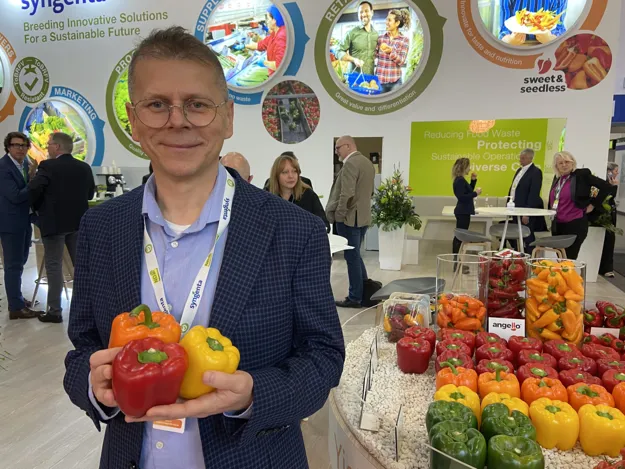One of the main roles of a portfolio manager is to talk to growers and consumers in different markets to understand those markets. Jacek Bursztynski, as EAME portfolio manager for peppers at Syngenta Vegetable Seeds, knows this very well. He understands those three markets – Europe, Africa and the Middle East – and can tell us more about the differences in pepper varieties for those regions.

Differences in resistances
"These regions are different from a growing perspective, there are different climate conditions, and different technology. Our role is to be in different places and to understand what is needed there. For example, different resistances might be needed in different areas."
For Syngenta, the biggest market in peppers is Spain. "There, peppers should be resistant to tomato spotted wilt, tobacco mosaic virus, nematodes, and powdery mildew," Jacek explains. "But in other areas, with active greenhouses, like the Netherlands, not all active resistances are needed."
Spain: Two production cycles
Zooming in on Spain, pepper production there revolves around two production cycles. "Winter production is concentrated in Almería, with the harvest time running roughly from November until April. They also have the spring production cycle, also in passive greenhouses, in soil. Then, in Murcia, there is the spring/summer production cycle." Those two cycles combined make sure Spain can produce year-round for the European market.
Focus on biocontrol
While the technology is different in those two areas, they do have something in common: "Both production regions are in the EU, so they have to meet European rules, which is why growers in Spain, and in Europe as a whole, rely mostly on biocontrol. At Syngenta, we want to help empower growers to use resources, such as crop protection products, judiciously."
For example, growers in Turkey used to export a lot of peppers to Russia before that market closed to them. Now Turkish growers are looking to export to Europe, which means they'll have to comply with European rules as well – a process that will take time but one that Syngenta wants to support.
Israel: Labor as a challenge
Another production region Jacek focuses on is Israel, which is currently facing labor challenges. "For many years, about 80 percent of agricultural labor was provided by Thailand." But many of the Thai laborers left the country for few months. This temporary gap has been partly filled by volunteers from kibbutzim. " Many local people from the country helped out with harvesting and maintaining the plants when they were visiting growers."
In Turkey, in contrast, labor is cheaper than in Israel or Spain, which has caused the production of blocky peppers to increase there in the last years, according to Jacek.
For more information: Syngenta
Syngenta
Jacek Bursztynski
Jacek.Bursztynski@syngenta.com
Mob +48 602 286 090
www.syngenta.com
